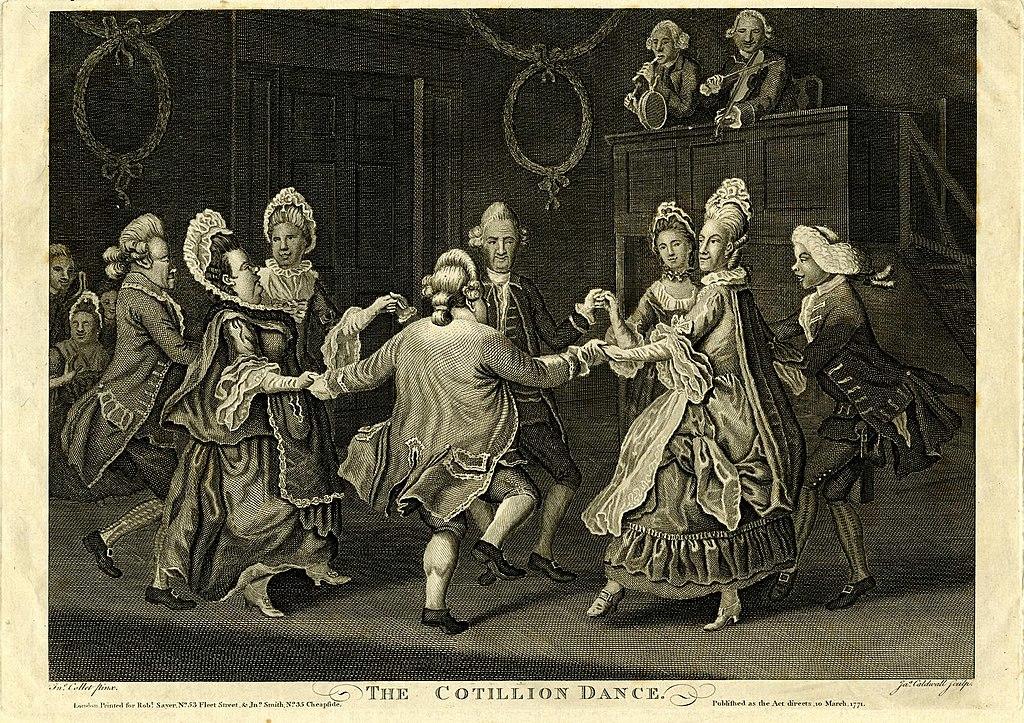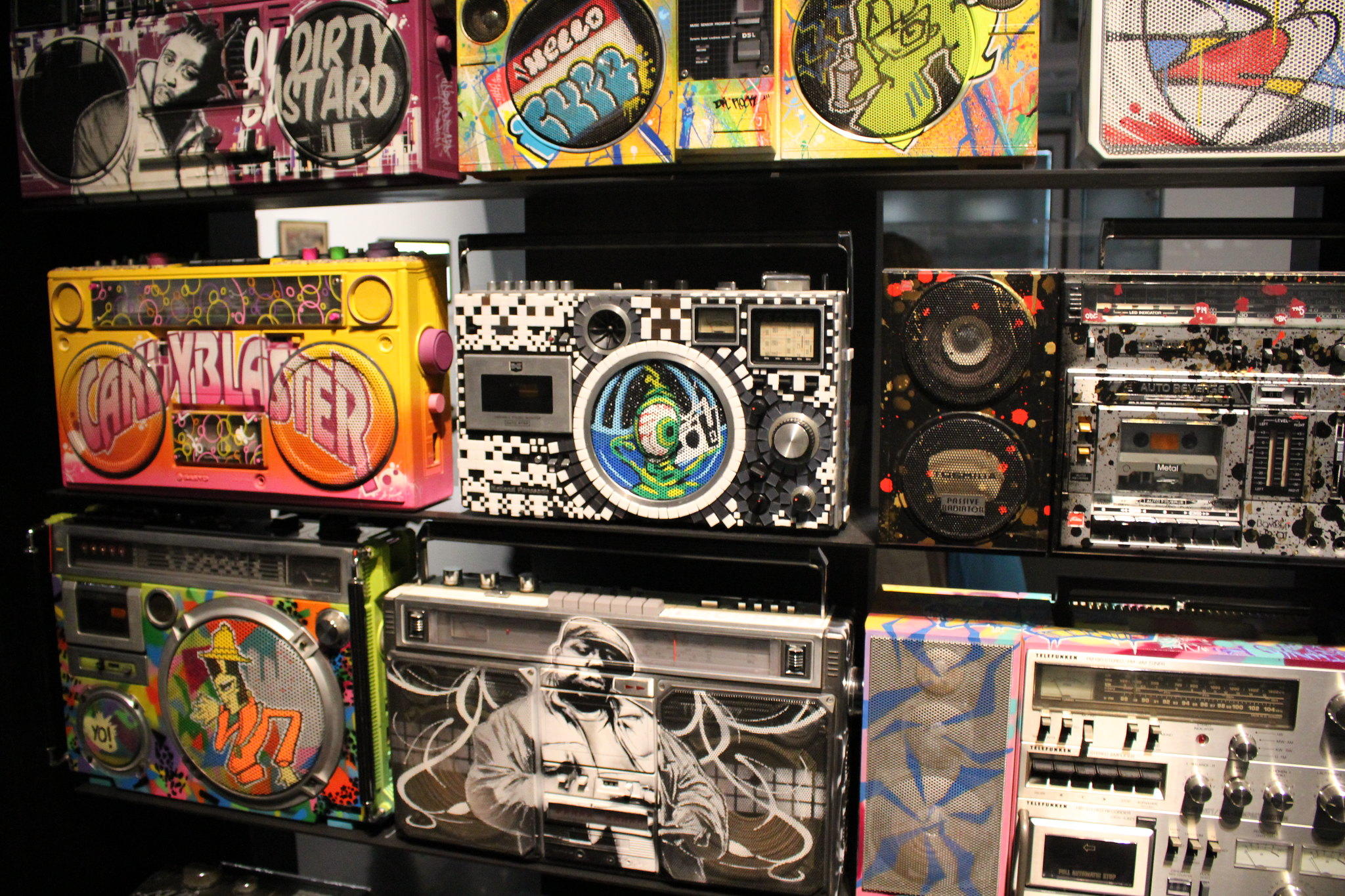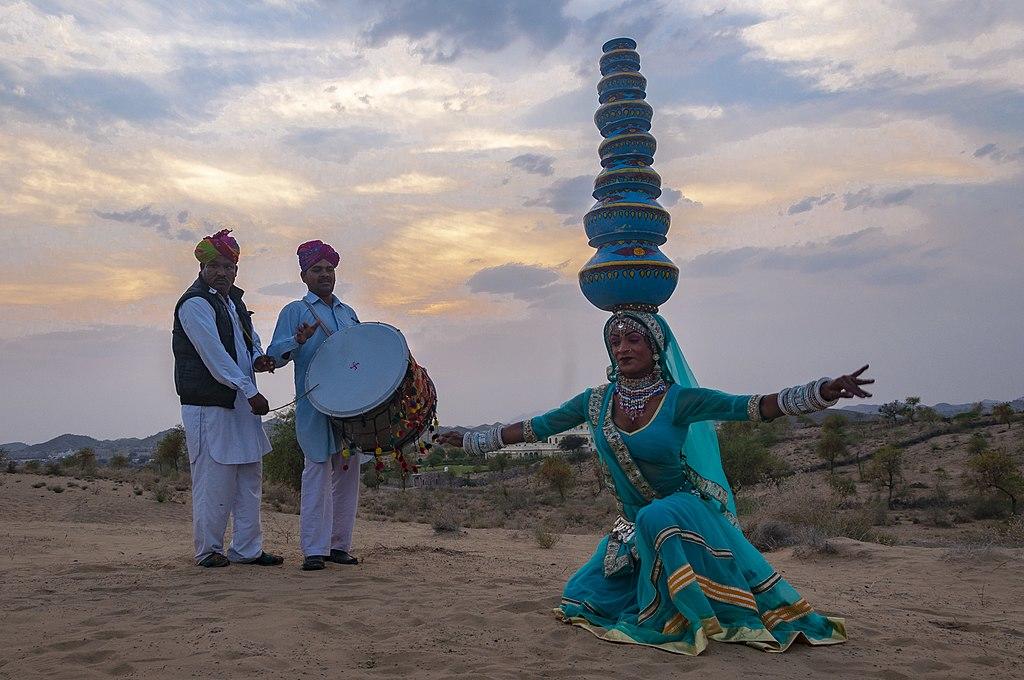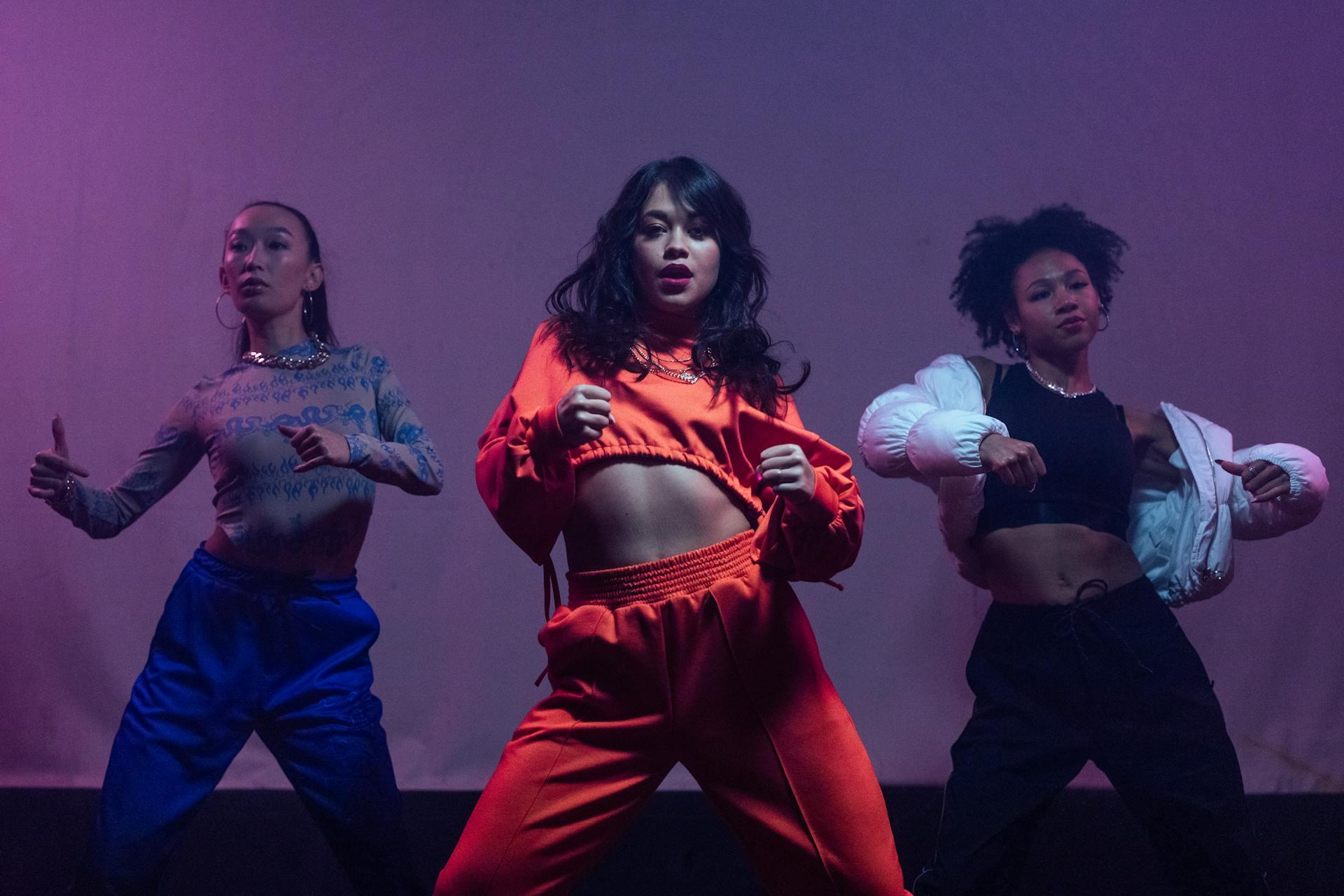Dancing is one of the oldest (if not the oldest) art forms humans developed. There is evidence of dancing as a tradition as long as 9,000 years ago, evidenced by ancient cave paintings in India at the Rock Shelters of Bhimbetka.
What's even more impressive is that civilisation is only around 6,000 years old, so dancing is even older than society!
Since its invention, dance has evolved in thousands of ways across time and the world. Here are some of the most popular forms of dance that have been prevalent all over the world in the past few hundred years.

Ballet
Ballet is arguably one of the most prestigious forms of dance and has been since its very beginnings. It originated in the Italian Renaissance where it was initially performed in royal courts. During the 15th and 16th centuries, its popularity was boosted by Catherine de Medici during her time as Queen of France.
From the courts of European monarchs, ballet evolved into a form of dance to be performed in theatres and on stage. The French and the Russians were the main pioneers of ballet during this time, but there were also Italian and English styles of ballet.
Learning ballet takes an incredible amount of dedication in many areas of life. It demands a lot of time and money, lifestyle changes, and eventual health issues related to the rigorous “pain is beauty” perfection demanded of professional ballet dancers.
Ballroom
Ballroom dancing is, as the name suggests, the type of dancing done in ballrooms: large rooms typically found in mansions, palaces, and residences. Nowadays, you can find public ballrooms for ballroom dancing, but initially, it was typically enjoyed exclusively by European aristocracies.
The earliest examples of ballroom dancing date back to the 16th century, but the style became codified during the late 17th century, complete with rules and positions.
Ballroom and ballet dancing were essentially the same thing until ballets moved to theatres and stages, emphasising the separateness of ballet dancers versus the audience.

Ballroom dancing branched off and became an interactive formal dance style. It became popular to pair ballroom dancing with music like waltzes and minuets.
The important thing to remember about ballroom dancing is that it's a style for pairs to enjoy and you can't really do ballroom dancing on your own. You need a dance partner! Typically, there is a leader and a follower (traditionally a man and a woman, respectively).
The most popular types of ballroom dances include:
- Waltz
- Foxtrot
- Tango
- Cha Cha Cha
- Rumba
- Samba
- Bolero
- Quickstep
Belly Dancing (Raqs sharqi)
Belly dancing has ancient roots in the Middle East, with origins dating back thousands of years. It evolved as a celebratory dance, often performed by women at social events. It can be considered a folk dance hailing from the Middle East and originating about 6,000 years ago.
In the 20th century, belly dancing gained global popularity as an expressive, sensual dance form. Today, it remains a vibrant part of Middle Eastern culture and is practised and enjoyed worldwide.
Find your perfect teacher for any style of dance and take dance lessons here on Superprof!
Contemporary
Contemporary dance is a broad term and quite difficult to define, but it's generally considered to be where ballet and modern dance meet. There are a few key areas where it differs, though.
Ballet, for example, focuses very much on the legs whereas contemporary dance uses the torso more. Contemporary dance could be said to be more “chaotic” than ballet, with rhythmic changes, creative freedom for the dances, and often serving no narrative function. Ballet was typically used to tell a story, like a theatre without acting.
Culturally, contemporary dance is also more willing to include non-European sources of inspiration such as African and Asian styles of dance.
Hip Hop
Hip-hop dance dates back to early hip-hop culture in the 1970s and it's the first dance style we've mentioned that traces its roots to the US. Like many things in the US, hip-hop dance has roots in New York City, but California was also a hotbed of new dance styles that would evolve into hip-hop dance.
Unlike ballet, ballroom, and contemporary dance, hip-hop dancing is also probably the first of our styles that is mainly done at parties and not at performances. Some common hip-hop dance moves include breakdancing, street jazz, and popping, locking, and dropping.
It originated as a subculture in the heart of New York City, where the underserved non-white communities began feeling the effects of a post-industrial declining economy. What could these people do when they can’t find much work, don’t have money to participate in activities, and don’t have anywhere else to go?

They started an underground music and dance scene. This was a way for people to relate to one another while finding any small joy possible in their oppressive circumstances. Hip-hop culture encompasses music, dance, DJing and MCing, clothing, art, language/vernacular, social norms and more.
This is a style of dance that keeps on giving and it's very common to see the most popular TikTok dance challenges drawing upon hip-hop and urban dance. Since it’s the most popular dance in the world, it has also inspired movies like Step-Up, simply because the culture is interesting and the dance moves are mesmerising!

Jazz
Unlike hip-hop dance, jazz dance isn't necessarily danced to jazz music, though the etymologies of the two are linked and so are their origins.
Much like jazz music, jazz dancing originated in African American culture and focused on improvisation. However, jazz dancing can refer to types of dances that aren't related to jazz music.
Jazz dancing was born when African steps combined with European styles of movement. This combination would lead to things like swing dancing and moves like the Charleston and the Cakewalk.
Tap Dance
Tap dancing feels like where dancing and music meet because of the percussion from the shoes.
If you didn't know, tap dancing shoes have pieces of metal on the heel and the toe which helps them to make the noise you hear when tap dancers perform.
Tap dancing originated in the 1920s with African dance styles and evolved into a style of dance that was used by minstrel shows, which were a racist form of entertainment where it was common for white performers to appear in blackface.
When the minstrel shows became less popular, tap dancing moved to Vaudeville. Vaudeville had an unwritten rule that black performers weren't allowed to perform solo, so tap dancing was regularly performed as a duet.
Nowadays, tap dancing can be performed in groups, duets, or solo performances by people of any kind of ethnicity and the racist past of the art form has largely been forgotten. While it’s a great form of dance, it’s also important to acknowledge its murky past.
Folk Dance
As you'll see in just a moment, folk dancing is another broad term that actually encompasses many different types of dancing. Generally, folk dancing is a style of dancing performed by people in formal and non-formal settings but not as part of a performance.

For a dance to be a folk dance, it needs to be something that happens organically without any kind of codification or strict rules. Generally, if a type of dancing has been done for a while by certain people and in social or cultural settings without being for the purposes of a performance, it's probably folk dancing.
Nowadays, however, it can be common for certain kinds of folk dancing to be recorded, taught, and codified to keep the forms alive, especially in places where folk dances are becoming less popular and our next type of dancing is a fine example of this. There are also plenty of performances showcasing folk dances these days as a way to celebrate heritage and tradition and share the art with others.
Some of the most popular folk dances include
- Cumbia - Colombian Folk Dance
- Jaunimélio - Lithuanian Folk Dance
- Joropo - Venezuelan Folk Dance
- Sabar Square - Senegalese Folk Dance
- Chula Picada - Portuguese Folk Dance
- Umzamsi - South African Zulu Fold Dance
- Hopak - Ukrainian Folk Dance
- Hudo - Indian Folk Dance
- Dunhuang - Chinese Folk Dance
- Tinikling - Filipino Folk Dance
Irish Stepdance
Irish dancing came from traditional Irish folk dancing. However, Irish dancing definitely has performative and competitive forms these days.
Until the 20th century, Irish dancing remained uncodified and was taught by travelling dance masters in the 17th and 18th centuries. Nowadays, Irish dancing is arguably one of Ireland's most famous cultural exports.
The exact history of Irish dancing is a mystery, but it’s theorised to be a Norman modernisation of Pagan dances originating from the Celts. Over the years, it was likely influenced by English Country dancing, French quadrilles, and others.
Irish dancing can be done solo or in groups and includes various different styles such as Ceili dances and Irish stepdances with a lot of overlap in styles, definitions, and formats.
There are two main types of Irish dance: The soft shoe and the hard shoe (like tap shoes). Soft shoe performances typically highlight a wide range of leg movements, especially the impressive leaps and overbounds. It’s such an enchanting dance style, it’s surprising that it’s not a huge TikTok challenge yet!
Hard-shoe jigs seem very similar to tap dancing because both forms emphasise the sounds made with the dancers’ special shoes, and to the untrained eye, both forms might look pretty much identical. However, those in the know will be able to recognise that tap dancers and Irish dancers use different movements and emphasise different beats in their respective dances.
Modern Dance
The problem whenever you call something “modern” is that time will march on and it'll eventually no longer be particularly modern. This is the case with modern dance, which originated in the late 19th and early 20th centuries. Much like ballet, this style of dance was to be performed, but it was purposefully supposed to be in opposition to ballet.
As we mentioned earlier, contemporary dance is somewhere at the crossroads between modern dance and ballet so modern dance is essentially whatever ballet isn't. Modern dance originated in both the United States and Europe and because of its focus on the freedom of the performer (in contrast to ballet's limited rules and codified forms), it rapidly evolved over time.
Salsa Dance
Salsa dancing originated in the 1960s, evolving from a blend of Cuban son, Puerto Rican bomba and plena, and other Latin American rhythms. It gained widespread popularity in the 1970s, especially in New York City. Today, salsa is enjoyed globally, with thriving dance communities and competitions. The dynamic, passionate movements of salsa have made it a beloved social dance form worldwide.
Swing Dance
Swing dancing is the kind of dancing that goes with swing music, the type of jazz that originated in the United States during the 1920s and 1930s.
It's another type of dance that drew upon African dances and was pioneered by African American communities in the United States, particularly in cities like New York City. There are multiple kinds of swing dances. The most popular styles include Lindy Hop, Jitterbug, Boogie Woogie, West Coast Swing, and Rock and Roll.
Of course, once you start to explore different types of dancing, you'll see that there are way more styles than the few we mentioned here, but these should serve as good places to start your search for the right style of dance for you!
You can learn these popular dances for fun or for a special event, like a wedding, all with the help of an amazing dance teacher. Why not find a teacher on Superprof today?
















